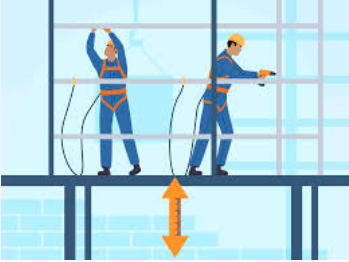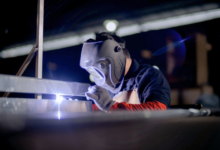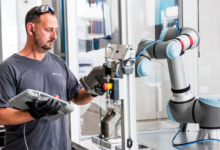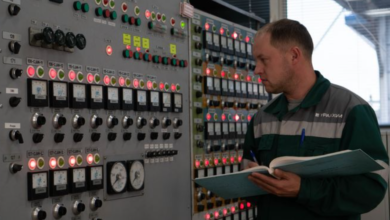Staying Safe at Height: How OSHA Crane Regulations Protect Workers

OSHA crane regulations play a crucial role in keeping workers safe when operating at heights, setting strict standards for equipment, procedures, and training. These regulations are designed to minimize risks associated with crane operations, from falls to mechanical failures, ensuring that both operators and nearby personnel are protected. In this article, we’ll explore how OSHA crane regulations safeguard workers and what measures are essential for maintaining safety on construction sites.
Overview of OSHA Crane Regulations
OSHA’s crane regulations establish clear safety requirements to protect workers during lifting operations and reduce the risk of accidents. These rules outline how cranes must be operated, inspected, and maintained, ensuring that both operators and employers follow consistent safety standards.
Key components of OSHA’s crane regulations include:
Relevant Standards
- 29 CFR 1926 Subpart CC: This OSHA standard covers cranes and derricks on construction sites. It sets rules for qualified operators, regular inspections, proper signaling, safe rigging, and correct crane setup.
- 29 CFR 1910 Subpart N: This OSHA rule covers cranes and hoists in factories, warehouses, and industrial settings. It ensures they are used safely and properly maintained.
Equipment Covered
The rules apply to many types of cranes, including tower cranes, mobile cranes, truck-mounted cranes, crawler cranes, overhead and gantry cranes, articulating boom cranes, and other specialized lifting equipment.
Scope
OSHA rules cover safe crane operation in all industries. They address lifting dangers, working at heights, proper equipment setup, and operator training to keep the workplace safe. OSHA crane regulations provide the foundation for safe lifting. They ensure operators are qualified, equipment is well-maintained, and job sites are protected from avoidable dangers.
Operator Certification and Training
OSHA requires crane operators to be properly trained and certified to ensure they have the knowledge and skills needed to operate equipment safely. Proper certification helps prevent accidents caused by operator error and ensures consistency across job sites.
Key requirements include:
- Accredited Certification: Operators must be certified by an OSHA-accredited program that covers crane type, capacity, exams, and safe operation.
- Equipment-Specific Training: Operators must be trained on the specific crane, including controls, load charts, emergency procedures, and attachments.
- Employer Evaluation: Competency must be verified and documented under actual working conditions.
- Ongoing Training: Retraining is required for new equipment, changed conditions, or unsafe performance.
- Communication & Signal Training: Operators and signal persons must be trained in proper hand signals and communication protocols.
These rules help make sure crane operators are well-trained and work safely, which lowers the risk of accidents.
Equipment Standards and Inspections
OSHA requires strict equipment standards and routine inspections to ensure cranes remain safe, functional, and compliant. These rules help detect dangers early to prevent accidents.
Key requirements include:
- Follow Manufacturer Standards: Operate cranes according to the manufacturer’s load charts, setup instructions, and approved attachments. Any modifications or repairs affecting crane capacity require manufacturer or engineer approval.
- Inspections:
- Initial: Any new, repaired, or modified crane must be inspected before it is used to ensure it is safe and ready for operation.
- Frequent (Daily/Shift): Check the crane’s wire ropes, hooks, brakes, controls, hydraulic systems, tires, and outriggers each day or shift. Any defects should be repaired before operating the crane.
- Periodic (Monthly/Annual): Qualified inspectors examine the crane’s structural and mechanical components on a monthly or annual basis. All findings must be documented, and records must be maintained.
- Setup & Ground Conditions: Always place cranes on firm, level ground. Fully extend outriggers and use mats or cribbing when the ground is soft or unstable to ensure stability.
- Immediate Removal From Service: If a crane has a serious problem, stop using it right away and have it repaired by qualified personnel before operating it again.
- Documentation: Maintain records of inspections, repairs, and adjustments. Ensure they are accessible for OSHA review and tracking recurring issues.
Following these equipment standards and inspections ensures cranes remain reliable and safe, reducing the risk of mechanical failure and enhancing overall job site safety.
Safe Operation Practices at Height
When crane operations involve working at height, strict safety practices are essential to protect operators, riggers, and anyone in the surrounding area. OSHA requires employers to implement procedures that minimize fall risks, ensure stability, and maintain control of loads in elevated environments. Here are the key safe operation practices at height:
- Proper Setup & Ground Stability: Position cranes on level, stable ground using outriggers, stabilizers, or cribbing, ensuring the surface supports the crane and maximum load.
- Fall Protection: Workers above 6 feet must use harnesses, lanyards, anchors, guardrails, or designated walkways.
- Safe Load Handling: Control loads to prevent swinging, use tag lines when needed, and never exceed rated capacities.
- Wind & Weather Monitoring: Continuously monitor conditions; stop lifts in high winds, lightning, fog, or rain that reduce safety.
- Clear Communication: Use signal persons, hand signals, or radios; halt lifts if communication fails.
- Emergency Preparedness: Know shutdown procedures, rescue plans, and ensure safety equipment is accessible.
Following these practices keeps crane operations safe and reduces risks at height.
Environmental and Site Safety Considerations
Environmental conditions and site-specific factors play a major role in crane safety. OSHA requires assessing site and weather conditions to prevent crane accidents. Here are the key considerations:
- Weather Conditions: Monitor weather conditions, as they impact crane safety and performance. Stop operations when conditions exceed safe limits.
- Ground & Soil Stability: Ensure the ground can support the crane using pads or mats if needed. Check for underground utilities, voids, or soft/backfilled areas.
- Site Layout & Obstructions: Identify and avoid overhead dangers. Maintain safe clearances and ensure enough space for crane setup and movement.
- Traffic & Personnel Control: Use exclusion zones, barricades, and spotters to keep workers and vehicles clear of crane operations.
- Visibility & Lighting: Provide proper lighting, manage blind spots, and stop work if visibility becomes unsafe.
- Environmental Protection: Prevent fluid leaks, control dust/noise/emissions, and follow regulations when working near sensitive areas or water.
Checking the worksite and environmental conditions helps identify hazards, reduce risks, and keep workers safe.
Compliance and Documentation Requirements
To ensure safe crane operations and meet OSHA regulations, employers must maintain thorough documentation and follow compliance measures:
- Inspections and Maintenance Records: Keep detailed logs of daily, monthly, and annual inspections, as well as all maintenance and repairs.
- Operator Certifications and Training: Document that all crane operators are properly certified, trained, and evaluated on the equipment they use.
- Lift Plans and Hazard Assessments: Record pre-lift planning, critical or complex lift plans, and site-specific hazard assessments.
- Equipment Documentation: Maintain copies of manufacturer load charts, setup instructions, safety manuals, and approved modifications.
- Accessibility: Ensure all records are readily available for OSHA inspections or audits.
Maintaining proper documentation supports safe operations, verifies compliance, and provides accountability in case of inspections or incidents.
Best Practices for Employers and Operators
To ensure safe crane operations, employers and operators should follow these key practices:
- Comprehensive Training: Provide ongoing training and refresher courses for operators, riggers, and signal persons.
- Pre-Lift Planning: Conduct thorough job and lift planning, including hazard assessments and weather considerations.
- Clear Communication: Use standard hand signals, radios, or other communication systems to coordinate lifts.
- PPE and Safety Measures: Provide personal protective equipment and enforce safety protocols.
- Follow Manufacturer and OSHA Guidelines: Adhere to load charts, setup instructions, and regulatory requirements.
- Documentation: Maintain accurate records of inspections, maintenance, training, and operational decisions to ensure compliance and accountability.
Following these practices helps prevent accidents, maintain OSHA compliance, and promote a strong safety culture on site.





